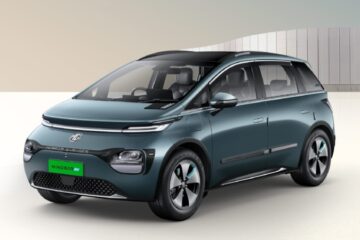Bhavish Aggarwal, CEO of Ola, explains why the company is not build electric cars


Ola Electric, recognized as the leading manufacturer of electric two-wheelers, recently disclosed its ambitious plans to venture into the electric car market. However, in a surprising turn of events, the company has officially scrapped its highly anticipated electric luxury car project. Bhavish Aggarwal, the Founder and CEO of Ola Electric, confirmed this decision shortly after launching the company’s first electric motorcycle.
In a recent discussion with PTI, Aggarwal shed light on the reasoning behind this unexpected move. He clarified that Ola Electric is currently focusing on developing products that are more pertinent to the Indian market. The company had initially revealed its intentions to create an electric sports car with an all-glass roof in 2022. The announcement, made during Ola’s annual event on August 15, 2022, promised a vehicle that could compete with top electric cars in India, boasting a range of 500 kilometers on a single charge and a 0-100 km/h acceleration time of just four seconds.
When explaining the decision to abandon the electric car project, Aggarwal emphasized that Ola’s vision is centered on creating products tailored to the needs of India, while also developing technologies that can be scaled effectively. He noted that the company is following a deliberate sequence, beginning with two-wheelers before expanding into other product categories. This approach underscores Ola Electric’s broader strategy of prioritizing both profitability and scalability.
Reports suggest that the decision to halt the luxury car project was influenced by the company’s recent initial public offering (IPO). The IPO, which experienced a significant increase in pricing, has heightened the pressure on Ola Electric to achieve profitability. Aggarwal indicated that the company’s focus has now shifted towards products that can be produced and sold at scale in the Indian market.
Despite encountering some financial challenges, such as a one-time reversal of approximately Rs 30 crore due to changes in government standard operating procedures for PLI rules, Aggarwal remains optimistic about the company’s future. He emphasized that Ola Electric’s path to profitability will be driven by increased production volumes, vertical integration of the supply chain, and in-house production of battery cells.
Aggarwal also commented on India’s need to develop a sustainable approach to energy and automotive solutions. While he acknowledged that electric luxury cars are seen as the global solution for sustainability, he argued that this model is not relevant for India. Instead, he sees the future of electric vehicles in India lying in two-wheelers, three-wheelers, and possibly small cars.
Although the electric car project has been shelved for now, Ola Electric has not entirely ruled out the possibility of revisiting it in the future. For the time being, the company’s primary focus remains on its core products-electric scooters and motorcycles. On August 15 this year, during its Sankalp 2024 event, Ola Electric unveiled its entry into the electric motorcycle market with the launch of the Roadster.
The new Ola Electric Roadster will be available in three variants, with the Roadster Pro serving as the flagship model. The top-spec variant of this model will offer a range of up to 579 kilometers and a top speed of 194 kmph. Additionally, Aggarwal showcased the in-house battery cell developed by Ola during the event. He highlighted the significance of the company’s ‘Bharat 4680’ cell, which is expected to be integrated into Ola’s vehicles starting in Q1 FY26. This development is part of the company’s broader strategy to improve margins by reducing dependence on external suppliers and increasing in-house production capabilities, ultimately bringing the company closer to its goal of profitability.


